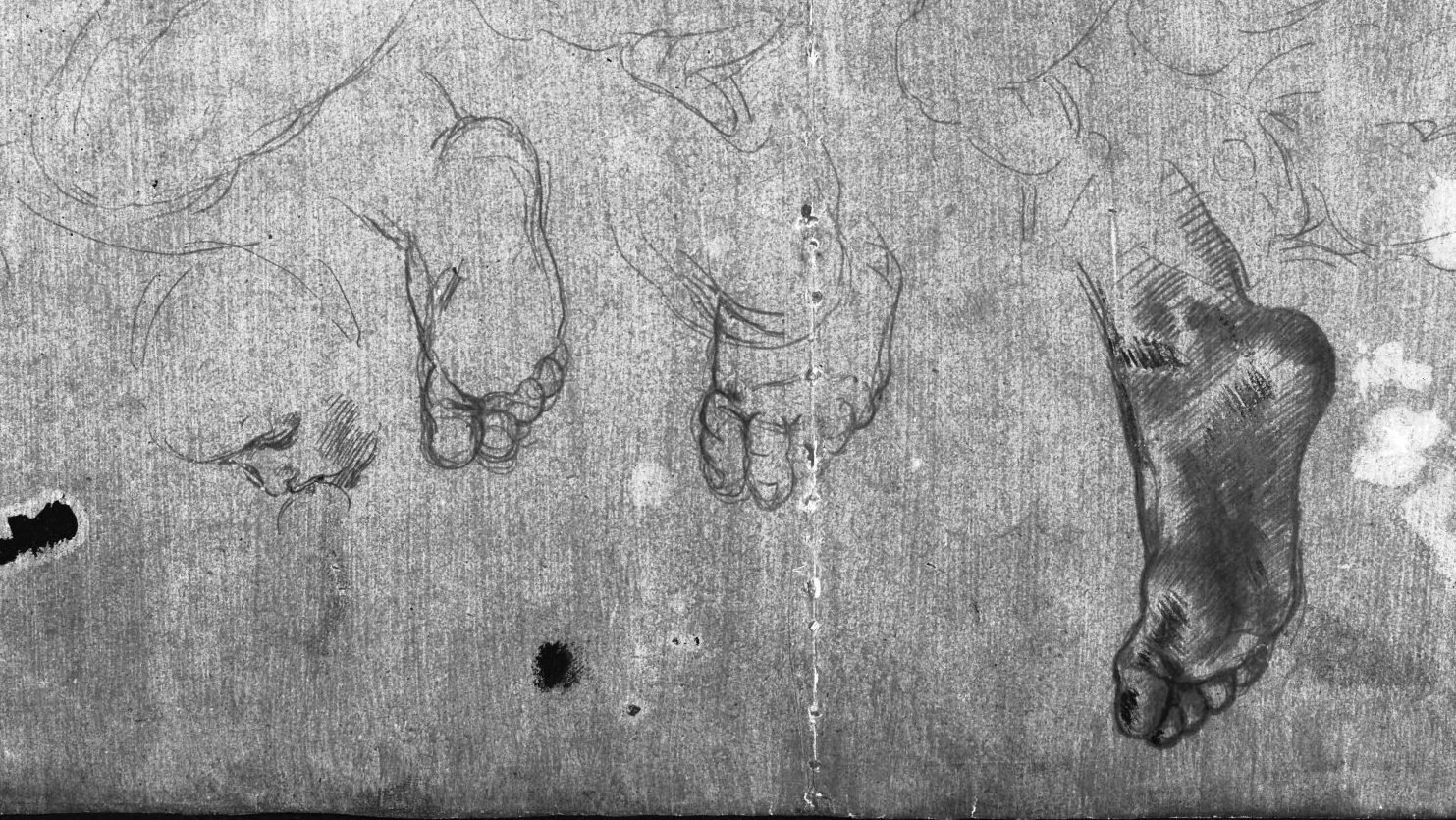There’s not a Mona Lisa in sight. In fact, there’s a grand total of one painting in the whole exhibition…err, are you sure you’ve got the right da Vinci?
Welcome to the British Library’s new exhibition, which will certainly put your mind in motion, as its title suggests, thanks to its atypical depiction of the genius we think we know.
To celebrate the 500th anniversary of Leonardo da Vinci’s death, as macabre as that sounds, the British Library has collated a stunning selection from three of da Vinci’s notebooks – on display together for the very first time. In addition to the Codex Arundel from the library itself and the Codex Forster from the Victoria and Albert Museum, visitors can see pages from the Codex Leicester – on loan from Bill Gates who bought it for over $30m in 1994.
The focus of this exhibition is not on da Vinci the artist, but the scientist. This side of the polymath is rarely so fully explored as here, with the notebooks revealing his ideas, experiments and discoveries in areas such as mechanics, geometry, astronomy, architecture and hydraulics. The black, grey and turquoise theme of the exhibition space is a change from the ubiquitous white gallery walls da Vinci’s work normally adorn. Seeing the contrast between the pale cream of the pages from the artist’s notebooks and this dark background gives the collection an eerie sense of mystery, which is compounded by any attempts to decipher the artist’s famous back to front, or ‘mirror’, writing.
Though relatively small, the exhibition room allows visitors a close view of each carefully chosen page: amongst the rows of painstakingly neat sentences, diagrams spiral out of corners and disturb the discipline of the body of text. These are no hasty scribbles but rather, da Vinci’s masterpieces in miniature: from representations of an underwater breathing apparatus to the flow of the Arno River in Italy. Da Vinci’s notebooks are works of art in themselves, a testimony in this digital age to the power of writing and drawing by hand. At times, though, you do have to roll your eyes in exasperation at the feeling that there was seemingly nothing, not even doodling, that da Vinci, like a universal teacher’s pet, did not excel at.
The interactive features of the exhibition provide us with access to digitalised copies of da Vinci’s notebooks, as well as transcriptions and translations of his works, which serve to demystify da Vinci’s illegible script. Thanks to the succinct explanatory panels, even the most clueless of visitors – myself very much included – can gain an understanding of why da Vinci’s works were, and still are, important to the scientific community. For instance, the exhibition highlights da Vinci’s disputation of established Aristotelian ideas about the difference between the ‘celestial’ and ‘terrestrial’ parts of the universe and observations about how the Moon, rather than emitting its own light, reflects that of the Sun.
Nevertheless, this exhibition does hold something for those accustomed to da Vinci’s traditional oeuvre by emphasising how he applied his scientific ideas to his artworks and linked motion in the natural world to his pioneering depictions of the human body in motion. The final item in the exhibition is a copy of the first version of the Virgin of the Rocks, known by art critics for the unified composition of its religious figures and its innovative abandonment of halos. However, after showing visitors da Vinci’s sketches on the motion of water, the exhibition encourages us to adopt da Vinci’s multidisciplinary viewpoint and compare his sketches of flowing waves to the flowing locks of the Madonna’s hair.
Whether you come to this exhibition from the arts or the sciences, it is hard not to admire da Vinci’s crossover of these two, supposedly diametrically opposed disciplines. Whatever answers the exhibition provides to questions about his contributions to science and engineering, we are inevitably left with a sense of the incomprehensible genius of da Vinci.
Leonardo da Vinci: A Mind in Motion is on at British Library until September 8th.



